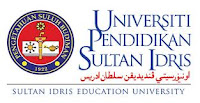Ribuan ikan mati timbulkan kebimbangan penduduk
MELAKA – Penduduk terkejut apabila menemui ribuan bangkai
ikan darat pelbagai spesis terdampar di Sungai Rembia di Kampung Solok Jeram,
dekat sini pagi semalam.
Kejadian disedari kira-kira jam 9 pagi oleh penduduk yang
melalui kawasan berkenaan.
Seorang penduduk, Marzuki Talib, 41, berkata, dia dalam
perjalanan menuju ke kandang kambing peliharaannya tidak jauh dari lokasi itu
mendapati beberapa penduduk berkerumun di tepi sungai melihat longgokan ikan
terbabit.
“Saya lihat segelintir mereka mengutip ikan terbabit yang
masih ‘nyawa-nyawa ikan’ untuk dibawa pulang.
“Tetapi ada juga yang bimbang untuk menjadikannya lauk
kerana takut beracun,” katanya ketika ditemui di sini semalam.
Marzuki berkata, antara ikan yang mati termasuk talapia,
sembilang dan betuk.
“Sebelum ini, pernah berlaku kejadian serupa pada tahun
lepas tetapi tidaklah seteruk ini.
“Saya mengesyaki ia berpunca dari kawasan perkilangan
berhampiran yang besar kemungkinan mengalirkan sisa toksid sehingga menjadi
punca pencemaran sungai,” katanya.
Sementara itu, Sidang Kampung Rembia, Mohd Soid Baba, ketika
ditemui berkata, pihaknya bimbang terutama haiwan ternakan penduduk kampung
yang menjadikan air di sungai berkenaan sumber minuman.
“Ekoran kejadian ini, kami sudah menghubungi Jabatan Alam
Sekitar (JAS) dan pihak berkenaan sudah mengambil sampel air dari sungai
terbabit untuk dihantar ke Jabatan Kimia.
“Apa pun keputusannya, kami berharap supaya pihak yang
terlibat janganlah membuang sisa toksid sehingga mencemarkan alam semulajadi
khususnya kehidupan di sungai ini,” katanya.
Sumber: Sinar Harian
Analisis
data/artikel.
·
Ribuan ikan darat mati dan terdampar di Sungai Rempia di
Kampung Solok Jeram.
·
Penduduk di sekitar menjadikan sumber ikan di situ
sebagai makanan harian
·
Haiwan ternakan menjadikan sungai di situ sebagai sumber
minuman.
·
Kejadian berlaku mungkin berpunca dari kawasan kilang
berdekatan yang mungkin mengalirkan sisa toksik.
·
Pernah berlaku kejadian yang serupa pada tahun lepas
tetapi tidak seteruk ini.
Mencadangkan
penyelesaian
·
Mengenal pasti punca kematian ikan
·
Mengambil sampel air dari sungai terbabit untuk menguji tahap
pencemaran dan pH air.
·
Mengenal pasti kesan yang timbul atas haiwan ternakan
yang menjadikan air di sungai sebagai sumber minuman
Menilai
penyelesaian yang berpotensi
·
Menyelesaikan
masalah
1.
Mengenal pasti punca kematian ikan
·
Mengambil sampel ikan.untuk Sampel ikan mestilah yang masih hidup, terdapat tanda-tanda
sakit yang teruk dan baru dijangkiti.
·
Ikan dimasukkan ke dalam plastik
dan diberi pengudaraan.
·
Sampel air diambil dari beberapa
lokasi sungai dan dari punca air masuk dan keluar.
·
Air dimasukkan ke dalam botol
plastik (500ml) dan ditutup rapat.
|
Masalah persekitaran
|
Patogen
|
|
Parasit
|
Bakteria
|
Virus 'outbreak'
|
|
Kematian
serta-merta dalam kuantiti yang banyak dan tidak menunjukkan sebarang
tanda-tanda penyakit fizikal
|
Kematian
berperingkat- peringkat, 2-10 ekor sehari.
Badan diselaputi lendir yang banyak.
|
Kematian
berperingkat- peringkat, 2-10 ekor sehari.
Terdapat luka, kudis, kemerahan dan sebagainya
|
Kadar kematian akut
dan tinggi.
Kematian selalunya melibatkan peringkat umur, spesis ikan tertentu.
Terdapat tanda klinikal
|
·
Mengetahui ciri-ciri ikan yang
normal untuk di bandingkan dengan ikan yang sudah tercemar.
2.
Mengambil sampel air dari sungai terbabit untuk menguji
tahap pencemaran dan pH air.
·
pH air dapat di uji dengan mengambil sampel dari sungai.
·
pH yang rendah bermaksud air berasid. Semakin rendah pH
semakin berasid air.
3.
Mengenal pasti kesan yang timbul atas haiwan ternakan
yang menjadikan air di sungai sebagai sumber minuman
Analisis
air sisa akan dijalankan untuk mengenalpasti kandungan sisa toksik dalam
air. Air akan diuji dengan beberapa
parameter fizikal dan kimia.
Parameter
fizikal yang terlibat ialah:
v Suhu
air
-
Thermometer
digunakan untuk mengambil bacaan suhu air di sungai yang terbabit.
v pH
air
-
pH meter yang
mudah alih digunakan untuk mengambil bacaan pH di sungai tersebut.
v Kekeruhan
air
-
Kekeruhan air
diuji dengan mengukur cahaya yang bertaburan oleh media cecair. Unit piawaian
untuk kekeruhan ialah Nephelometric Turbidity Unit (NTU).
-
Gunakan botol
HDPE 500 ml untuk menangkap air dari bahagian bebas pengaliran air sungai.
v Jumlah
pepejal terampai.
-
Pepejal terampai ialah zarah-zarah yang
terampai di dalam air yang tidak dapat larut. Pepejal teramapi pada kebiasaanya
lebih besar daripada zarah-zarah organic dan zarah-zarah tak organic. Di antara
contoh pepejal terampai seperti plastic, kayu, kertas, bangkai dan sebagainya.
-
Ia boleh diukur
dengan menggunakan cara penapisan dan timbangan sample air yang telah
dikeringkan.
-
Parameter
kimia yang terlibat ialah:
v Kandungan
oksigen terlarut
-
Kandungan
oksigen terlarut boleh diukur dengan parameter Permintaan Okisigen Biokimia
(BOD) dan Permintaan Oksigen Kimia (COD).
-
Permintaan
Oksigen Biokimia boleh ditakrifkan sebagai jumlah oksigen terlarut di dalam air
yang diperlukan untuk pengoksidaan biokimia secara aerobic terhadap bahan
organic yang wujud dalam air oleh mikroorganisma tertentu dalam tempoh masa
yang tertentu. Sungai dikatakan mengalami pencemaran air serius sekiranya BOD
air sungai kurang daripada 4mg/l.
-
Permintaan
Oksigen Kimia (COD) ialah oksigen yang diperlukan untuk proses pengoksidaan
bahan organik secara kimia kepada kaebon dioksida dan air.
v Jumlah
fosfat terlarut.
v Sebatian
nitrogen
-
Ammonia nitrogen
merupakan parameter yang digunakan untuk menunjukkan proses eutrofikasi berlaku
di sesebatang sungai. Nilai ammonia yang tinggi menunjukkan kehadiran baja,
najis haiwan atau kumbahan domestic. Nilai ammonia yang melebihi 1mg/l
menunjukkan wujudnya aktiviti penguraian oleh bakteria dalam sungai kerana
kehadiran ammonia yang berlebihan.
Satu eksperimen juga akan dijalankan untuk
mengenal pasti kesan terhadap haiwan ternakan yang minum air sungai tersebut.
Dalam
eksperimen tersebut, tikus makmal akan diggunakan.
1. 3
ekor tikus akan diletakkan dalam sangkar dengan bekalan air dari sungai
tersebut.
2. 3
ekor tikus akan diletakkan dalam sangkar dengan bekalan air bersih.
3. Dari
segi makanan, makanan yang sama dari segi kualiti dan kuantiti akan diberikan
kepada tikus-tikus tersebut.
4. Tikus-tikus
tersebut akan diperhatikan dari hari ke hari.
5. Segala
perubahan yang berlaku atas tikus-tikus tersebut akan direkodkan.


